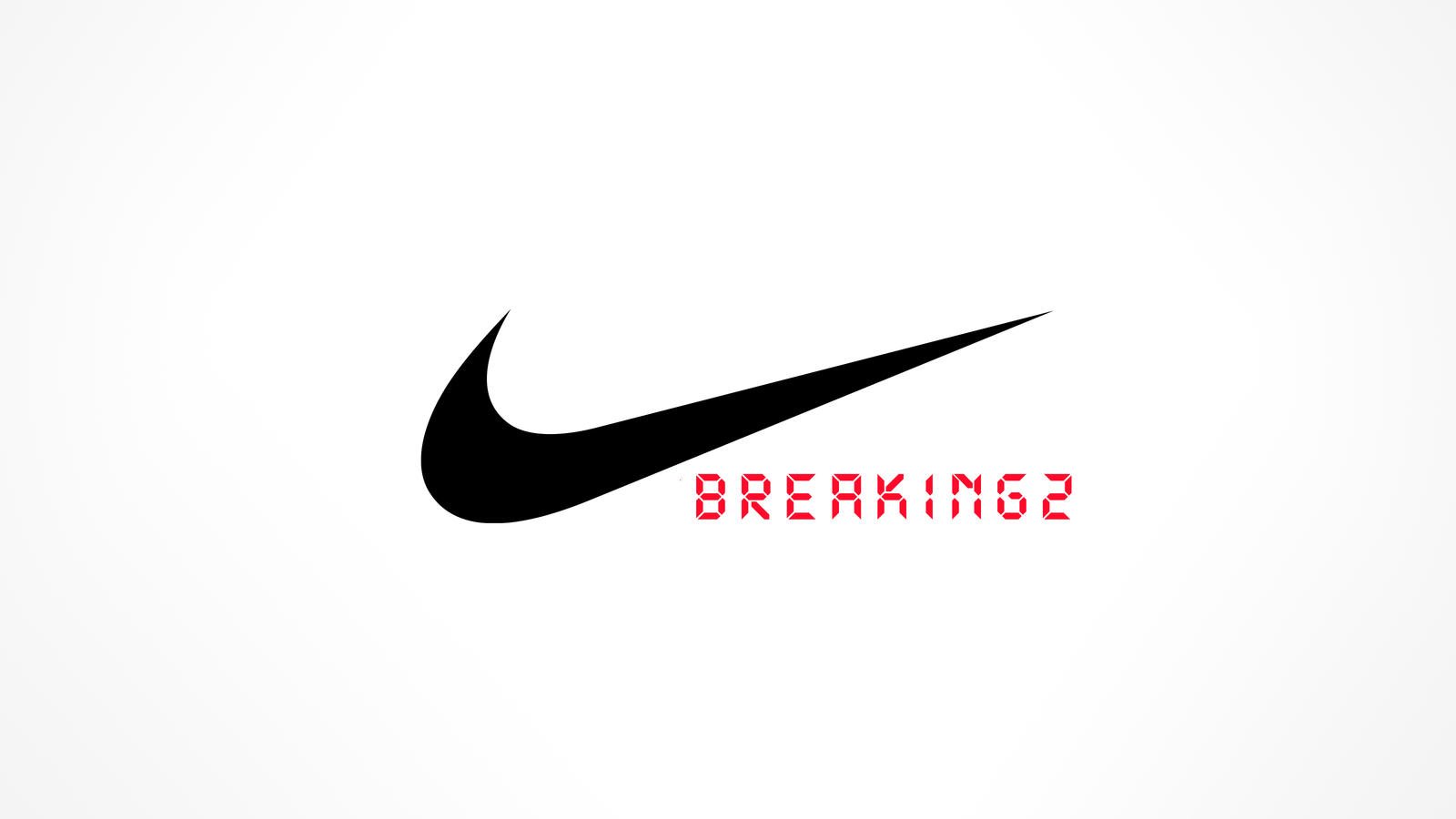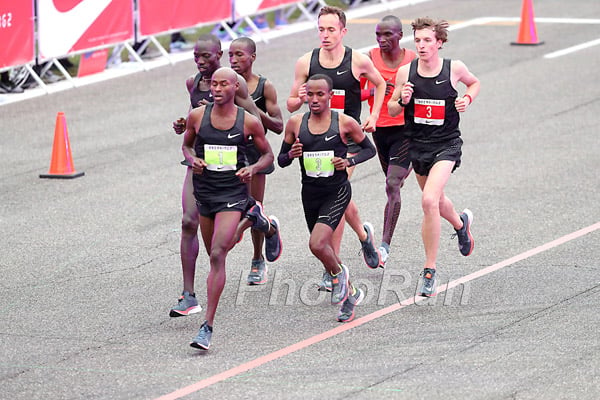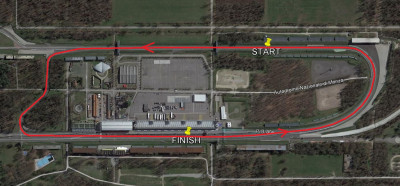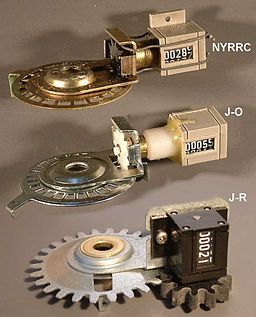How Far Did Eliud Kipchoge Really Run in His Breaking2 Attempt?
Kipchoge’s Incredible 2:00:25 Clocking Wasn’t Achieved Because He Ran Less Than 26.2 Miles – The Course May Have Actually Been Seven Seconds Long
The Red Line and Blue Lines Explained
by LetsRun.com
May 11, 2017
Last Saturday, Eliud Kipchoge ran an amazing 2:00:25 for the 26.2-mile marathon distance in Monza, Italy. After the run was complete, the world tried to make sense of it and figure out how Kipchoge had run 2:32 faster than the world record.
During our Monday all-staff conference call, everyone here at LetsRun.com re-watched portions of Kipchoge’s run, and we soon realized we had no clue what was going on in terms of the course. Most of the course was an oval and Kipchoge was running counterclockwise very close to a red line, but the pacers on the straightaways were on both sides of the red line.
However, on one part of the course, there was an “S” turn and there Kipchoge was seen running very far from the red line. There Kipchoge would run very close to and occasionally on both sides of a dotted blue line as shown here:
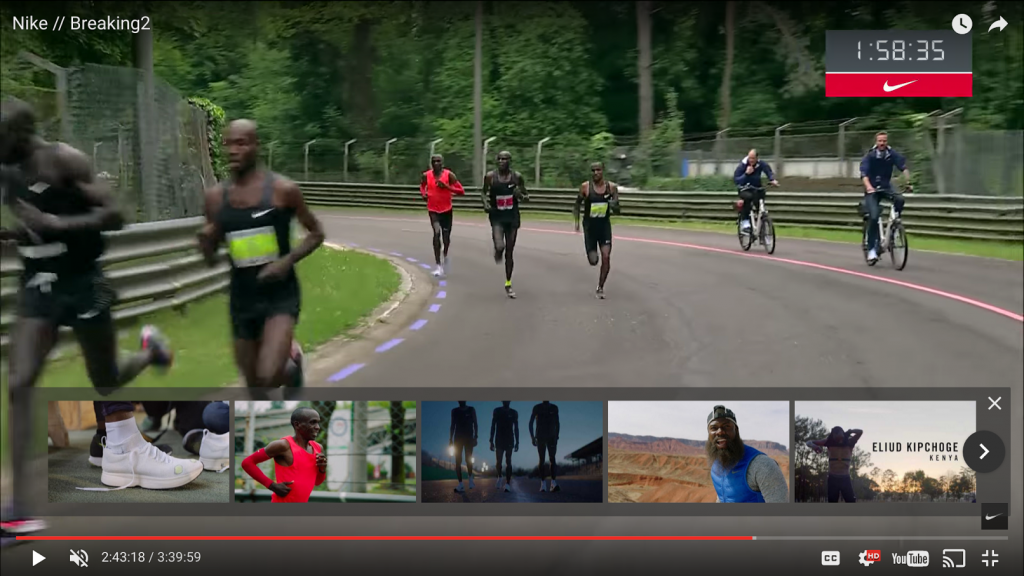 Kipchoge on the S turn
Kipchoge on the S turn
What the hell was going on? Is it possible that Kipchoge ran less than 26.219 miles (the official marathon distance is 42,195 meters)?
The short answer is no.
“I was there and then later watched the entire race. There is no doubt in my mind that he ran at least 42,195 plus at least another 40 meters or even more. I would have to carefully study the video (to see how much more than 42,195m her ran),” said Monza course measurer David Katz, whom we reached out to via email and later spoke to on the phone.
If you’re not familiar with David Katz, he’s the gold standard of course measurers. Katz was the course measurer for the 2012 and 2016 Olympic marathons, and has assisted with Olympic courses as far back at 1984. He’s also an occasional LetsRun.com poster who tries to explain the intricacies of course measurement to the LetsRun.com masses.
If Katz says a course is 42,195 meters, it’s 42,195 meters.
If the course was 42,195 meters, then what was going on with the runners running close to and on both sides of the red and blue lines?
The Red Line and an Extra 40 Meters on the Course Explained
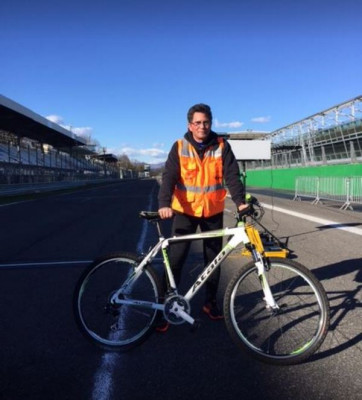 David Katz in Monza, Italy. Photo via Katz’s Facebook page.
David Katz in Monza, Italy. Photo via Katz’s Facebook page.
The first thing that Katz explained is that a course measurer is supposed to measure the shortest distance between two points on the course, cutting the tangents. So as long as the measurer does this and the runners stay on the course, they’re going to run at least the proper distance. On turns, like on a track with a rail, the measurer measures 30 centimeters from the curb. In theory, if a runner could hug every turn perfectly, they could shave off a little distance, but that doesn’t occur in reality. Katz said even for the 200m race on the track, where there is only one turn and the runners could try to hug it perfectly, he thinks the runners are running at least 200m.
In Monza, the red line was, in Katz’s terminology, “the left-hand parameter” of the course. When Katz measured the Monza course the first time, it came out to 2,386 meters, just under a mile and a half. The course wasn’t a perfect 2,400m because it wasn’t designed to be. The “S” turn the runners cut through was not part of the Formula One race course, but a service road for vehicles. Nike was going to just adjust the start line and come up with a course that was 42,195m, but Katz advised that it would be much better for timing purposes and kilometer splits if each loop was exactly 2,400m. Nike agreed and Katz set out to lengthen the course and make it 2,400m. (Nike ended up being able to time every 200m on the course as a result).
How did he do that? By making the marathon course not hug the road on all the turns and not always take the shortest path. The course on the left-hand side was not delineated by the curb, but rather by the red line that was a few meters off of the curb on some of the turns. This lengthened each loop, so it was 2,400m in distance.
Each loop counted for 2,400m, but in reality, Katz measured each loop so they were 2,402.2 – 2,402.3 meters long. Why 2,402+ meters? Because of the “short course prevention factor.” What is that? It is an IAAF recommendation that courses properly measured add .1% (1 meter every 1000 meters) to make sure they are not short. Katz said when courses are found to be short under remeasurement it is often because the initial measurer did not take the shortest path when doing the measurement. On a closed course with no traffic like Monza, measuring the shortest path is much easier than on a road course with traffic. Katz said Nike’s Breaking2 course came out to 2,402.25m on the average. Katz said in a perfect world the measurement would have come out to 2,402.4m but they came up just short once the final measurements were done when the course was set up with the red line and cones. In actuality, the rules clearly state that for a course to be record-eligible, it only needs to be 42,195 meters, not 42,195 plus 42 meters. Depending on the level of expertise of a measurer, Katz said most marathons measure out to be anywhere from 42,195 to 42,237 meters.
What About the Blue Line And Where to Place the Start?
If the red line was the boundary of the course on the left-hand side, then what was the blue line on the “S” turn? Katz explains that it was a line showing the runners the tangent to take to run the shortest possible distance on the course.
There were a couple of times when Kipchoge ran inside of the blue line, but Katz measured the “S” turn 30cm from the grass, so as long as Kipchoge wasn’t in the grass, that was acceptable. Katz said, “The course is measured within 30 cm of the edge of the course and just like on a track – a runner is allowed to run as close to the edge as humanly possible. It would have been dangerous for the runner to run on that edge because it was a little uneven.”
During the Breaking2 attempt, some of the pacers on the straightaways were often inside the red line on the left. We didn’t see Kipchoge cross the red line, but even if he did cross it on a straightaway that would only cause him to run extra distance. The only way he could “cut” the course would be if he ran inside of the red line around the turn and that definitely never happened. The red line on the inside turns had cones on it to make sure the runners didn’t go inside of it.
Katz said on a normal marathon course one of the problems for most runners is they don’t cut the tangents, adding extra distance, not to mention they often veer off for water on the water bottle tables. Those concerns were minimized with the Monza course, but the way the Monza measurement was done (2,402.25 meters per loop, counting as 2,400 meters) Kipchoge was guaranteed to run more than 42,195 meters, with one caveat: the starting line had to be put in the right spot. Katz ensured the starting line was placed with the runners running 58.125% of a loop on the first lap (17.58125 loops of 2400m equals 42,195 meters). Once the proper starting line was in place, you can see how Katz is confident Kipchoge ran in actuality at least an extra 40 meters, making the total distance 42,235 meters. It’s worth noting, at 2:00:00 marathon pace, it takes 7.2 seconds to run an extra 42 meters with each meter being covered in .17 of a second.
Katz Talks About Monza: “The Best Measurement I’ve Ever Done in My Life”
Katz rightfully takes a lot of pride in his work and was particularly proud of the job he did in Monza, calling it “the best measurement I’ve ever done in my life.”
Why was that? Katz said, “It was my best measurement because I had several days to do this on a closed roadway and I was able to do it over and over again.” He thus could be even more thorough than normal. Oftentimes, Katz is left to work on roadways with traffic, so it is not possible to measure the course over and over. But with Monza, Katz first measured the course in late March or early April and measured it ten times. He also had fellow IAAF grade “A” measurer Maurice Winterman with him.
Katz wanted the course to be pre-certified and by having two IAAF grade “A” measurers measure it separately, and it was. Katz and Winterman also returned the week of the event and remeasured it. Katz says in total, he probably measured the course 20 times.
Katz, a retired middle school science teacher who ran at Fredonia (N.Y.) State and was a former cross country and track coach at Adelphi University (he coached a winning 4×440 team at Penn one year), definitely appreciates what the runners go through in training, so he does his best to ensure they run the proper distance. In this instance, Katz and crew ensured Eliud Kipchoge ran 26.219 miles and hopefully not too much more. “People train their asses off and as a measurer, we have to work just as hard to make sure it’s as accurate as possible,” he said.
****
Course Measuring 101
Side note: Katz couldn’t believe LetsRun.com co-founder Weldon Johnson did not know exactly how a course was measured.
Katz then gave Weldon a lesson in course measuring 101, so here it is for you as well.
First, Katz starts by laying out a 300m “calibration course” on a straight, flat road with a steel tape measure. (Katz’s steel tape is from Japan and is calibrated every meter.) The tape measurement is corrected due to temperature. Since it’s a steel tape, adjustments must be made for temperatures being above or below 68 degrees F.
He then gets on his bike which has a Jones Counter attached to it (a Jones Counter is a device designed to measure courses that is attached to a bicycle’s axle that clicks roughly 11 times per meter as the wheel rotates) and rides the 300m at least four times to figure out how many Jones clicks are in 300m and thus 1000m as well. From there, he starts measuring the course, taking the tangents on his bike. Then after, the counter is checked again against the calibration course and corrections are made. Throw in a second measurer, and a ton of spot checks, and you can be pretty certain a course David Katz measured is the proper distance. Katz said in remeasurements, a 2,400m course like the one used in Breaking2 only varies by a few centimeters.
We didn’t ask Katz about the possible nightmare of volunteers moving cones around (but in this case he rode the course several times up until 10 minutes before the start, constantly checking the position of the cones), but we did ask him about being involved with the Breaking2 event and Katz thought it was really cool that Nike was trying to use science to break the 2-hour barrier. He said it reminded him of Matt Damon in The Martian when he said he was going “to have to science the shit out of this.”
As for course measuring, the humble Katz says it doesn’t require advanced science. “I tell everyone I can teach everyone what I know about course measuring, but I tell them, ‘You’re going to have commit 30 minutes of your life (to listening to me).’ It’s not rocket science,” he said.
